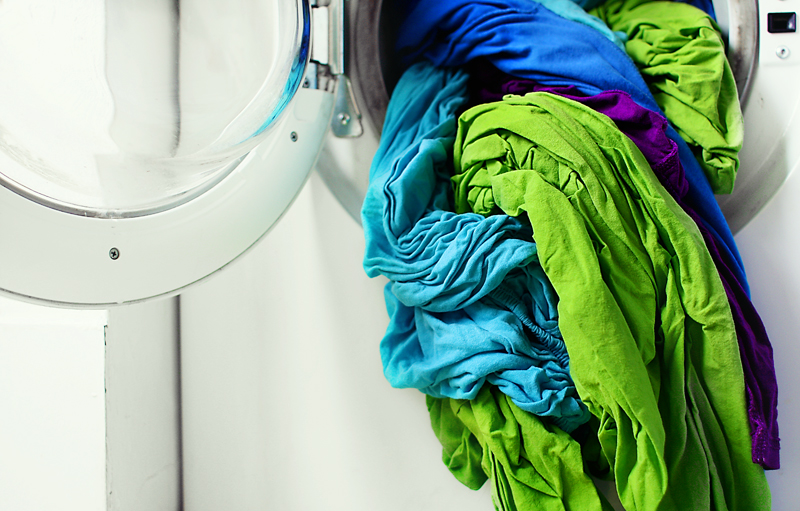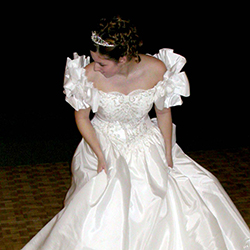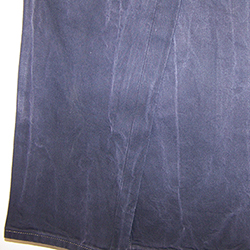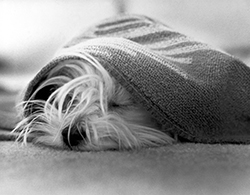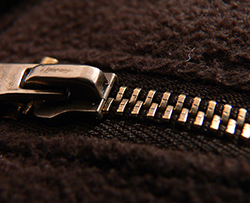Making Laundry Easier – One Load at a Time
From the Drycleaning and Laundry Institute. Laundry is a chore that must be done one way or another. Unfortunately many people haven’t read the manuals for their home laundry machines and have inherited some bad habits that have been passed down from generation to generation. Here are some common mistakes you can avoid to get your clothes their cleanest so they’ll make you look your best. Many people despise doing laundry, but not us! Why not let us do it for you? Common Laundry Mistakes • Overloading the washer This common mistake leads to poor cleaning performance, more wrinkles, and excessive wear on garments. Dirt and soil from some garments can become redeposited in others, dulling vibrant colors and giving a dingy look to whites. • Poor Sorting of Loads This can cause problems with dyes bleeding onto other garments. • Too Low Water Temperature Detergents are more active in higher temperatures and will get your clothes cleaner. • Not Sorting Drying Loads and Overloading the Dryer It takes longer to dry and lightweight or delicate fabrics get over-dried, resulting in permanent wrinkles in heat sensitive fabrics. Drying Pointers Drying is just as important as washing, and though many of us simply toss the wet clothing into the dryer, there are ways to improve your look and protect your wardrobe. When it comes time to dry your next load, try following these easy steps to get less wrinkles, shorter drying times, and safer drying. Sort by fiber content and weight: Heavier garments might require more heat and time than light garments. To get the most out of your machine, and your time, sort loads accordingly. Do not overload dryer: Overloading causes more wrinkles and longer drying times. It can also overburden your dryer and shorten its life. Select drying temperature by fiber content: Some fibers, such as polyesters and acrylics, will be damaged by too much heat. When in doubt, it is best to dry on low heat and air dry to finish. Fold or hang garments immediately after drying: This helps ward off wrinkles and keep your clothes looking fresh. This can also help garments dry out if there is any water remaining after the cycle. Q: How do you remove grass stains? A: Most grass stains can be removed by simply washing the item according to the care instructions, especially if the stain is fresh. But if the stain has been allowed to set or proves to be difficult to remove, you may need to try other treatments. Treat the stain as soon as possible, using a pretreatment product from your local grocery store. Test the product for colorfastness by applying to an unexposed area. Let stand for five minutes, then rinse. If the color is affected, don’t use the product. Also check the label on your laundry detergent for pre-treatment instructions. To remove any last traces of the stain, an all-fabric bleach may be necessary. Again, remember to test for colorfastness. Bleach the entire garment following the manufacturer’s instructions, then launder as usual. Q: How do you clean sleeping bags? A: Sleeping bags can usually be washed, but because many contain down or fiber filling, you should always check the care instructions before cleaning. Sleeping bags should be washed separately on a gentle cycle. Add detergent to the washer and partially fill with warm water. Submerge the sleeping bag in the water to expel air, then allow the washer to finish filling. Periodically stop the washer, open the lid, and press air from the sleeping bag to...
Read MoreAfter Your Wedding
Caring for Your Wedding Gown May and June are the traditional wedding months, particularly in the United States. A wedding gown is much more than just a dress, it is a treasure, a symbol of an important event in your life. Whether you are borrowing it from a relative or buying it new, your gown deserves your attention, both before and after the wedding. After the Wedding Most brides want to preserve their gown as a keepsake, particularly if the gown is an heirloom. Cleaning industry experts recommend that you have your gown cleaned as soon after the wedding as possible. The gown may have invisible stains from food, beverages, and body oils. If these stains are not properly cleaned, they may become permanent. Therefore, it is important to point out any stains or spills to your cleaner before cleaning. Most wedding gowns have some sort of decorative trim. It is important to inspect these trims with your cleaner prior to cleaning since some trims are not made to withstand the drycleaning process. Some beads and glitter are made of plastics or covered with surface coatings that are not solvent-resistant. In many of these cases, the trim becomes separated from the dress or altered in some way. In some cases, decorative trims yellow as the finishes oxidize. An ivory or ecru trim may lose its color and no longer match the gown if a dye component is lost in cleaning. Color failures of this type are due to poor colorfastness of the dye, not to improper cleaning. Special Care Instructions When it comes time to clean your gown, take it to your cleaner for professional drycleaning or wetcleaning. There are many specially trained cleaners who can assist you with storage of your gown for a fair and reasonable price, making it unnecessary to send your gown away for cleaning and storage. The most important factor to consider in wedding gown storage is that your gown must be properly cleaned before storage. Be sure that you feel comfortable with your professional cleaner’s reputation before taking your wedding gown to be cleaned. Problems arise after a wedding gown is cleaned and all concerned discover that there is no safe or satisfactory method to restore the gown to its original appearance. Storage Tips for Wedding Gowns: Let us pack the gown in a special storage box that will help prevent contamination. Store your garment in a cool, dry place. Do not store it in a basement or attic. Basement dampness can cause mildew; attic heat can promote yellowing of the fabric. If you are storing a long wedding gown on a hangar, sew straps to the waistline of the dress to relieve pressure on the shoulders from the weight of the dress. Wrap the dress in a protective white sheet or muslin covering. Whether the gown is hung or boxed, the bodice should be stuffed with white tissue paper to prevent wrinkles. It is a myth that blue tissue paper helps to preserve a wedding gown. It can add up to disaster if the gown ever gets wet. Blue dye can transfer onto the gown, making restoration very difficult, if not outright impossible. Use pure white tissue paper only. Never store headpieces, veils, shoes, bridal bouquet, or other accessories with your gown. Consult your florist about bridal bouquet storage. Inspect your gown from time to time during storage (your anniversary date is a good time to remember). Stains not initially apparent could appear later, and should be tended to immediately. Preserving the quality of your wedding gown may be one of the...
Read MoreLevi’s 501 Shrink to Fit Issues
Levi’s instructions for 501 Shrink-to-Fit Jeans 1. Wear them as long as possible before you wash them. 2. On the first wash, soak in a capful of Dr. Bronner’s soap for 20 minutes. 3. The hotter the water the more they shrink. 4. It’s normal for the dye to color the water. 5. Rinse and drip dry until damp 6. Put them on and wear them until completely dry. http://levistrauss.com/sites/levistrauss.com/files/librarydocument/2010/10/levis-shrink-fit-501s.pdf We know that some of our customers would like for us to launder and press these jeans the same way that we do all of their other jeans. However, these jeans will shrink, a lot. Another issue with these jeans involves the streaking and fading of the dyes. See below for more information on that issue. Some sales clerks have suggested that their customers have the jeans drycleaned to prevent these issues. This not a good solution. Oak Forest Cleaners recommends that you wash and iron these jeans at home. If you follow the instructions from the manufacturer they will likely perform exactly as they are supposed to. If you insist, we will launder them for you but we will not be responsible for the almost certain shrinking, streaking, and fading that will occur. From Drycleaning & Laundry Institute The garment: A dark blue pair of cotton denim Levi 501 jeans. The care label states: machine wash cold inside out-liquid detergent recommended-tumble dry medium-hot iron-do not dryclean with confusing and sometimes contradictory International Code Symbols that for instance allows drycleaning. The problem: During commercial laundering, the blue dye bleeds, fades, crocks and creates objectionable light streaks. We have seen this very same fading problem during washing in similar Levi jeans of other colors, including black, light blue and even gray. Gentle home style cold water washing with mild liquid detergents also causes some fading, but it is minimized and streaking is usually eliminated. Who’s responsible? Many consumers want to have their jeans processed professionally because they want them starched and pressed for a stiff crisp appearance and sharp creases. Most washable jeans from major jean makers can withstand both home washing processes, as well as professional laundering without adverse dye disturbance. However, this particular style of jeans has had numerous colorfastness failures during commercial laundering. What to do: This is a warning that some Levi 501 cotton denim jean pants may not be commercially launderable by standard methods without adverse fading and streaks. In some cases, a milder alternative care process, as labeled, may be...
Read MoreKeeping Blankets Looking & Feeling Great
From the Drycleaning and Laundry Institute Keeping Blankets Looking & Feeling Great Blankets are essential items in every home. Blanket composition ranges from synthetic to natural fibers; from non-woven to woven fabrics; and from neutral colors to exotic prints. Caring for (non-electric) Blankets At some point in time, most blankets will need to be cleaned. It is always best to follow the manufacturer’s instructions when cleaning blankets. Although the Federal Trade Commission does not require care labels on blankets, care instructions are usually provided on a permanent label or temporary hang tag. In most cases, blankets should be machine washed on a gentle cycle in cold to warm water and line dried or tumble dried low. Most blankets can also be dry cleaned (except for electric blankets, which can be damaged by drycleaning). Wool is Special Wool blankets can be either of a woven or knit fabric construction and require special precautions when cleaning. Hot water or high drying temperatures may cause wool blankets to shrink and feel harsh and stiff. If the care label suggests, machine wash only in cold water on a gentle cycle with mild detergent, and line dry or tumble dry low. Even though you may follow the recommended care instructions, some wool blankets may still experience shrinkage. Industry standards for shrinkage in blankets allow as much as six percent after five washings. For example, a wool blanket that is 81 x 108 inches in size can shrink as much as 4 1/2 inches in one direction and 6 1/2 inches in the other direction, resulting in a blanket that is 76 1/2 x 101 1/2 inches in size. Q: Does frequent drycleaning shorten the life of a garment? A: On the contrary, frequent cleaning prolongs the life of a garment. Not only do stains set with age, making the garment unwearable, but ground-in dirt and soil act as an abrasive, like sandpaper, causing rapid wear of fibers. Also, insects are attracted to soils such as food, beverages, feces, perspiration, and oils from hair on the clothes and will cause further damage. Research was conducted by the Department of Clothing and Textiles at the University of North Carolina at Greensboro in cooperation with the School of Textiles at North Carolina State System, which was developed in Japan. The research showed that the various drycleaning processes have no negative effect on the properties of wool in men’s suiting...
Read MoreThe Birth of the Common Zipper
We use zippers on so many everyday items that it’s hard to imagine life without them. In 1893, the zipper was patented by Whitcomb L. Judson, a man from Chicago. He told the US Patent Office that his invention, the slide fastener, was a “cheap locker or unlocker for shoes.” His proposal featured an illustration of a pair of shoes featuring his invention in place of buttons. Judson’s intention in making the zipper was to replace laces or buttons on shoes and other items, such as mail bags and belts, and “for closing seams uniting flexible bodies.” Although Judson’s idea was popular, his design made it impossible to mass produce zippers economically. One day, a man from the Westinghouse Electric Company, Lewis Walker, saw Judson’s invention at Chicago’s Columbian Exposition. He was so interested in the idea that for 13 years he tried to modify the design to make it easier to reproduce in large quantities. But the idea sat in the US Patent Office until 1906, when Walker convinced a man named Gideon Sundback to work for Westinghouse. Sundback was a 26-year-old from Sweden who later received a doctorate in science from Allegheny College. He held a degree in electrical engineering when he started working at Westinghouse. Sundback was given the task of trying to solve the production problem that appeared in Judson’s slide fastener/zipper patent. After working on the problem for seven years, Sundback solved the problem of the slide-fastener design. He produced blueprints for the machinery to produce the zipper. As a result, the Hookless Fastener Company was incorporated in 1913 with 20 employees. In 1914, Sundback requested a patent and was given one three years later. The public loved it, and the zipper was officially born into...
Read MoreCleaning Pillows
Customer Question: How Do You Clean Pillows? A: The filling in bed pillows can be down, foam rubber, foam chips, polyester fiberfill, and kapok. The safest method to clean a pillow is based on the type of filling. If the filling in the pillow is fiberfill it is usually best to launder or remove the filling and replace the ticking. Foam chips can harden with time and begin to crumble. It is probably best not to clean these types of pillows. Down-filled pillows can be cleaned using a pillow machine. The down is removed from the ticking and placed directly into the pillow machine. The down is sometimes deodorized with ozone or sanitized with ultraviolet light. The features are then blown from the pillow machine into a new ticking and additional feathers may be added to fill out the pillow, if necessary. Washing down pillows can present several problems. The fabric ticking may be too fragile to handle the agitation of washing and tumble drying or so soiled it would be best to replace it. Often the ticking is sized with water-sizings. These sizings help hold the down in the ticking. If the sizing is removed in washing, feathers may leak...
Read More

